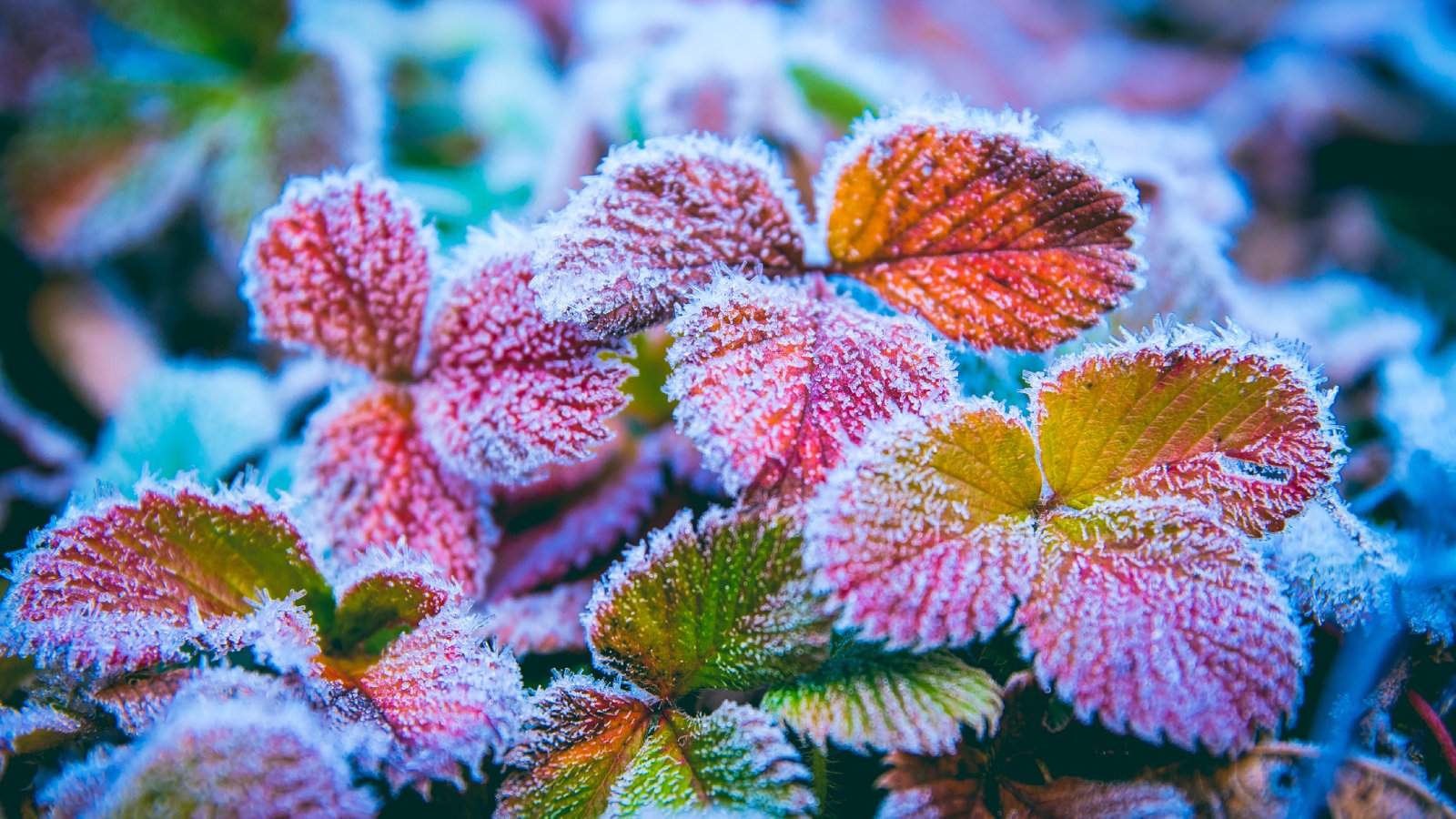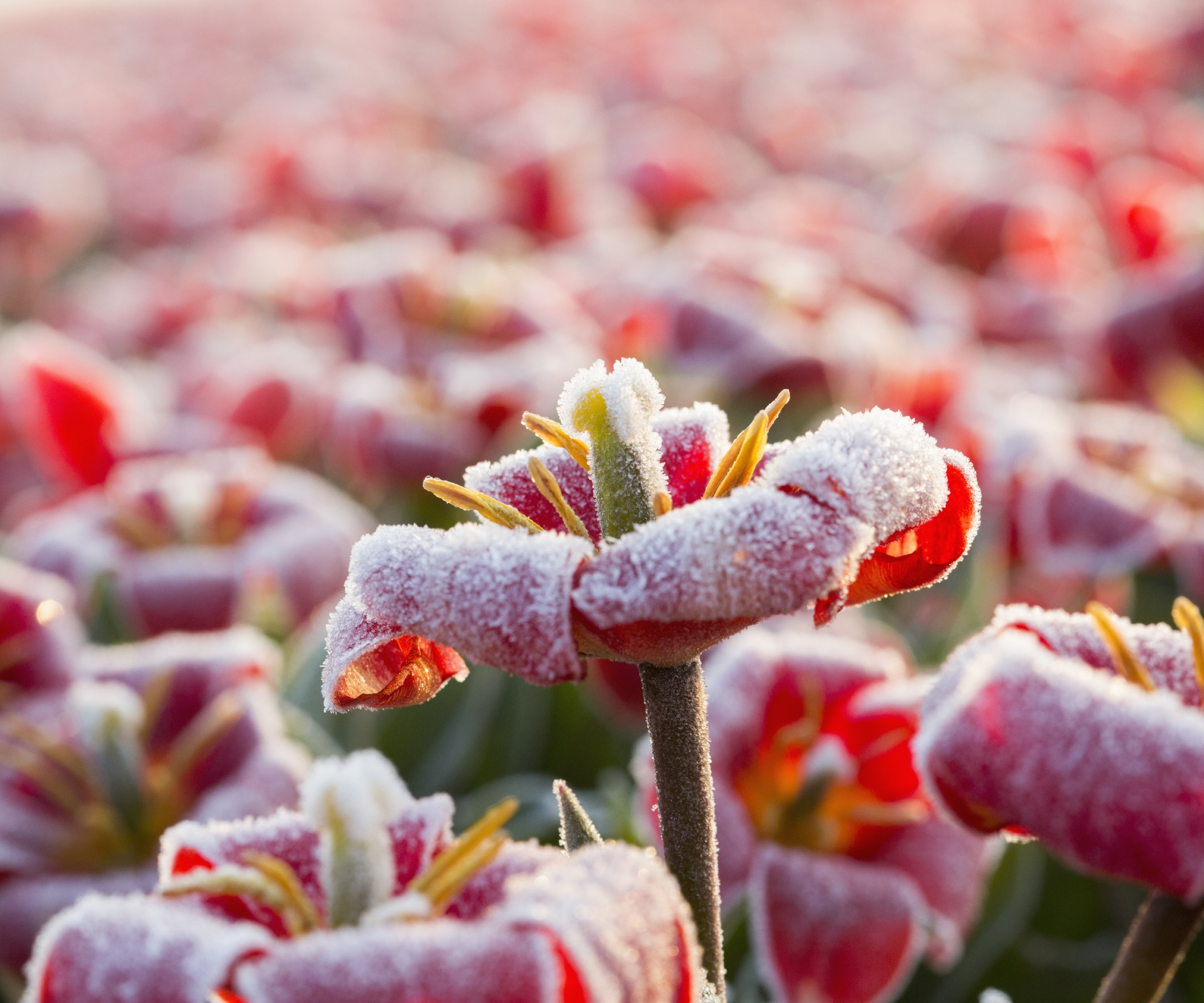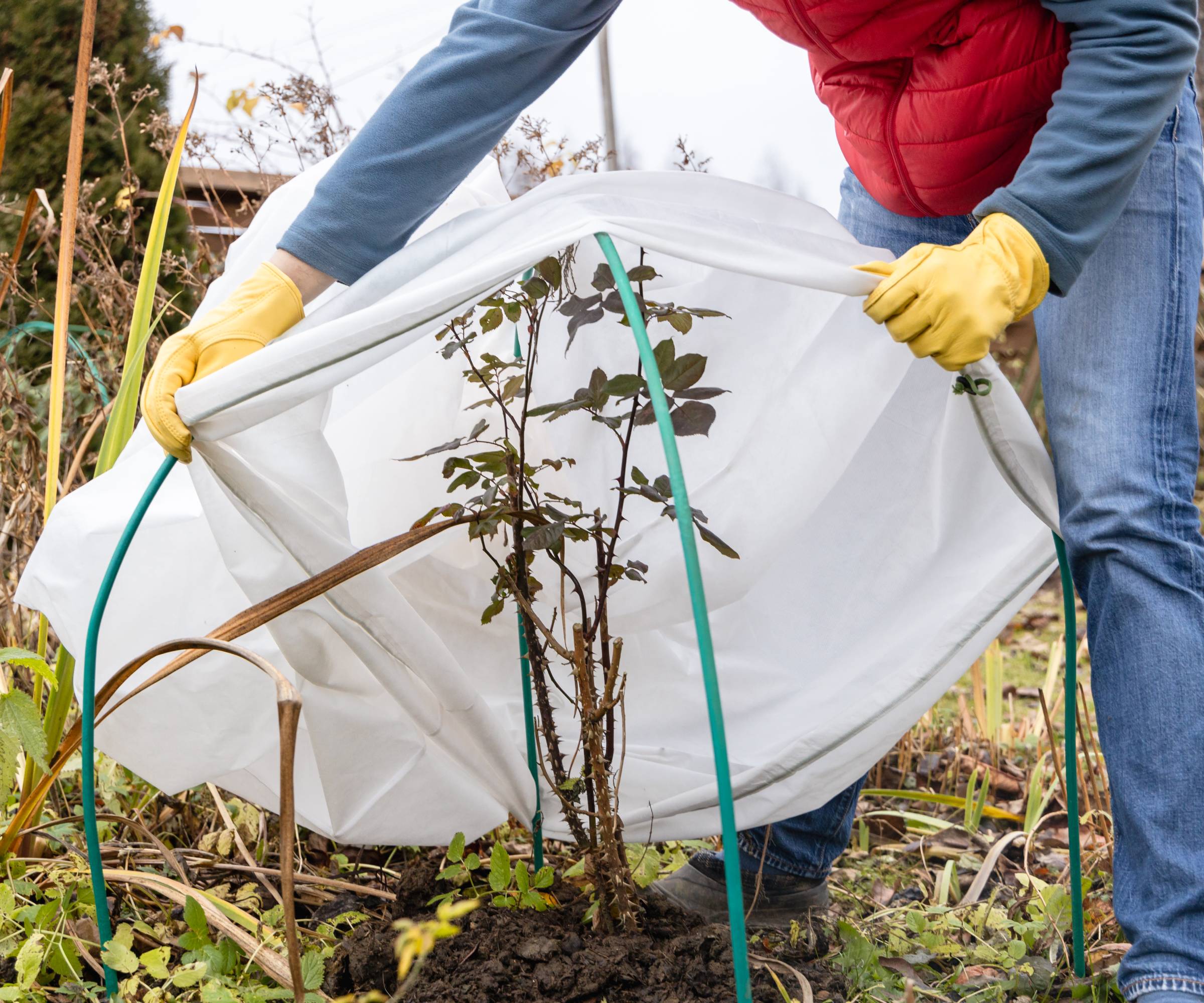How To Protect Plants From A Freeze – Best Ways To Keep Plants Safe & Warm
The best laid plans of any gardener can get overturned by an unexpected cold snap. Here's some practical steps you can take to protect your plants from a freeze.


Liz Baessler
Weather these days seems unpredictable, with unexpected hot weather in some places and torrential rains in others. But sudden freezes in fall and early spring have always been an issue for gardeners. It makes sense for a plant-lover to want to know how to protect plants from a freeze.
Why Plant Freeze Protection Is Important
Knowing how to protect plants from freezing is very important part of winterizing a garden. That’s because an unanticipated freeze can severely damage or even kill your plants. This is especially true when the freeze occurs after a brief warm spell, since that can cause the plants to come out of dormancy. Plants are more cold hardy when they are dormant.
Frost Vs. Freeze
Before we get into discussing how to protect plants from freezing, it’s important to understand the difference between a frost and a freeze. Frosts are less serious issues than freezes. If the cold spell has caused ice crystals on the top of the leaf, your plants have suffered a frost, not a freeze.
The downside of frosts is that they can happen before the air temperatures hit freezing if the surface of the foliage gets down to the freezing point. The good news is that frosts don’t cause major damage to most species, usually only injuring flower buds that have broken dormancy.
A freeze, on the other hand, happens when the air inside the plant tissues falls below freezing. The tissue freezes and wilts, turns black, and collapses. The freeze event can be an advection freeze or a radiation freeze. The former sees a cold air mass blown into a windy area. The latter does not involve wind. Rather, on a calm night, cold air drops to ground level and all heat moves up and away from the soil.
When to Protect Plants from Freezing

You can start protecting plants from freezing very early. In fact, buying cold-hardy and frost-tolerant plants to install in your landscape is one of the most effective ways to help your garden make it through the winter. Use the USDA hardiness zone map to select plants that can thrive in the lowest winter temperatures normally seen in your area. For extra protection, buy plants that are hardy to a lower zone than your region. That is, if you live in USDA zone 9, buy plants hardy to zone 8.
Another method of protection that works well before any cold weather arrives is to plant vulnerable perennials and shrubs in a wind-protected location. For example, if your area is subject to radiation freezes, position plants near stone or concrete buildings, since they soak up warmth during the day and release it at night. Even placing sensitive plants beneath tall trees can help.
Sign up for the Gardening Know How newsletter today and receive a free copy of our e-book "How to Grow Delicious Tomatoes".
Finally, be prepared early. Don’t rush to the hardware store as the temperatures drop. Get a plan in place well before the air approaches freezing and buy the materials you will need.
How to Protect Plants from a Freeze
The tried and true methods of protecting plants from freezing include irrigating plants, installing windbreaks, covering your plants, and adding a heat source.
Watering plants before a freeze is expected is a good idea in most cases. That’s because moist soil doesn’t freeze as easily as dry soil. But this only works in soil that drains well. You don’t want your plants sitting in mud as cold spells arrive.
The best windbreaks are structures or fencing, and you’ll have to consider these matters well before cold arrives. But covering plants can also stop cold-wind damage. In fact, covering plants is the top method of protecting them. How to cover plants for freeze protection? You can provide cover to plants by placing potted plants in a garage or shed. Protect landscape plants by using mulch, burlap, sheets, blankets, or – even better – plant freeze protection tarps.
For best effect, make the covering long enough that it touches the ground, but don’t let it touch the foliage. Use stakes, wire loops, PVC pipes, or even patio furniture, to elevate the covering so it does not touch the foliage.
What about a heat source? You can try putting a heat source under a plant cover to provide heat. Take care to place it in such a way that it doesn’t become a fire hazard. Even a simple 60-watt light bulb helps.
Caring for Plants after a Freeze

Can you save cold damaged plants? While they may not be dead, dealing with frozen plants is tricky. Check the water needs of plants after a freeze. After very cold temperatures, water that is in the soil may still be frozen and unavailable to the roots. If plants are transpiring (losing water from their leaves) and water is unavailable to the roots, plants may dry out. To provide water for plants, apply water to thaw the soil and the ice.
Irrigation becomes an issue after a freeze. If the water in the soil is frozen, it can’t travel up the roots to the foliage, and the plants may dry out. Water well to thaw the soil and eliminate the ice.
Frequently Asked Questions
At what temperature should I cover my plants?
Check the weather online to see whether freezing temperatures are predicted. Take action when the temperatures drop to a few points above freezing.
Will garbage bags protect plants from frost?
Plastic is not a good material to use for plant protection. Foliage can be damaged if it touches a plastic covering, since plastic will take heat away from the plant rather than warming it
Should you water plants before covering for a freeze?
Moist soil doesn’t freeze as easily as dry soil. That’s because it absorbs more heat during the day. So generally irrigating before a freeze is a good idea, but take care not to overwater or create a muddy situation.
This article features products available from third-party vendors on the Gardening Know How Shop.

Teo Spengler is a master gardener and a docent at the San Francisco Botanical Garden, where she hosts public tours. She has studied horticulture and written about nature, trees, plants, and gardening for more than two decades, following a career as an attorney and legal writer. Her extended family includes some 30 houseplants and hundreds of outdoor plants, including 250 trees, which are her main passion. Spengler currently splits her life between San Francisco and the French Basque Country, though she was raised in Alaska, giving her experience of gardening in a range of climates.
- Liz BaesslerSenior Editor
